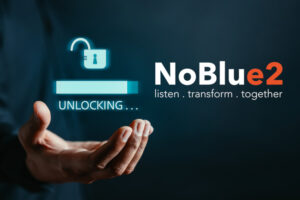Many companies have had great success employing recurring revenue business models. And we’ve become accustomed to using so many things this way – from streaming entertainment to beauty products and recipe boxes. And cloud computing has made the subscription model especially prevalent in the software sector, resulting in an expanding SaaS market
Recurring revenue means an ongoing agreement with the customer, which benefits the business, giving it predictable revenues, higher customer lifetime values and stronger relationships. But there are complexities too.
Here are some of the difficulties that come with a recurring revenue business model and how you can manage them with ease with an ERP system like NetSuite.
Sales
When a customer signs up with to buy your service, there are various actions that need to follow on from that. You need to process the payment, send an invoice and/or receipt, set up the contract dates, and schedule any other communications. An automated system takes the hassle out of all of this. The details of the product and the workflows that a sale triggers only needs to be entered once, then all the automated actions flow on from there. The product can be delivered quickly accurately, payment is processed and the customer lifecycle begins.
NetSuite’s SuiteBilling module makes it simple to manage more than one sales model at a time. It can handle recurring revenue for some of your products and one-off sales for others, for example. Plus, it can handle multiple pricing models and payments – with flat pricing, volume pricing, variable per unit pricing, payment in advance or arrears, models that have initial set-up fees and then ongoing license fees, monthly/quarterly/half-yearly/yearly payments, and different lengths of subscription term.
Renewals can be automated too, easing the process for your customers, while also preventing costly revenue leakage.
Revenue Recognition
Accounting for the revenue you receive via subscription methods can be complex. You’re not receiving a single payment for a product, so the way you account for it is different.
For example, if your annual subscription of £100 is paid by a particular customer who signs up with you on 26th June, then you can’t allocate the entire amount to June in case the customer is due a refund or reimbursement. So, you need to account for deferred and earned revenue – at different times during the subscription period. Manually handling takes a lot of time-consuming effort, especially as you grow and add hundreds or thousands of customers.
Your billing, revenue reporting and revenue recognition can all be automated, though. Netsuite automatically allocates revenue, in compliance with ASC 6060 standards that are set out by the Financial Accounting Standards Board and the International Accounting Standards Board.
Tracking Performance
To maximise a subscription model of selling requires that keep abreast of your performance. You need to track a range of KPIs so that you can see how you are faring.
Some metrics specific to recurring revenue that you might want to track include:
- customer acquisition rates
- customer acquisition costs (CAC)
- churn rates
- monthly recurring revenue (MRR)
- annual recurring revenue (ARR)
- lifetime value (LTV)
- LTV to CAC ratio
- payback period
- conversion rates – from a trial to paid, or from freemium to a premier plan, etc.
- average revenue per customer
It’s best to use an ERP with comprehensive reporting and analytics, where KPIs are presented on a customisable dashboard so that you can always see, at a glance, how you’re performing.
Payment
One of the biggest difficulties with a recurring revenue sales model is managing non-paying customers. Whether they haven’t paid deliberately or have had a credit card lapse, you still need to follow it up. The dunning process can all be automated within an ERP, helping to reduce your churn rates and saving you time and money.
Automated processes allow you to effortlessly send customer notifications about outstanding balances or rejected payment methods, as well as manage any late fees you impose or suspend accounts if they fail to pay within a certain timeframe.
Customer Management
Using subscription models is a great way of extending your relationship with your customer. But the relationship needs to be managed well. And it’s not just the financials you need to take care of.
Satisfied customers stick around. Keeping them happy depends on several aspects – the level of service they receive, how they perceive you, what they’re paying, the ease of self-service admin, and more. If you’re not delivering value with your offering, customers will cancel and go elsewhere.
You should nurture your relationships through communication, using CRM software. Where this is connected to or part of your ERP, you get an integrated view of your customer – from all the financial and account information through to how they have interacted with your marketing campaigns.
Upselling and Cross-Selling
Launching new products or services that you can upsell or cross-sell to your customers takes a lot of administrative effort. But with an ERP system, the billing is easily taken care of. You can quickly and easily add new products and pricing structures within the system, as well as one-off changes or promotions. Plus, you can add new pricing structures for some customers, retaining grandfathered pricing models for others.
International Sales
Most subscription businesses can easily operate across borders. There’s no need for import/export processes and no shipping delays. So, these companies can count on global expansion.
But this brings its own challenges: dealing with multiple languages, supporting varying payment methods, using multiple currencies, conforming to privacy laws, and dealing with different accounting standards, regulations and taxation systems.
With an ERP all of this is simple. Localisation functionality automatically performs financial and payment processes according to local constraints, ensuring you remain compliant with regional requirements.
Contact us for more information about how NetSuite can help you manage recurring revenue with ease.










